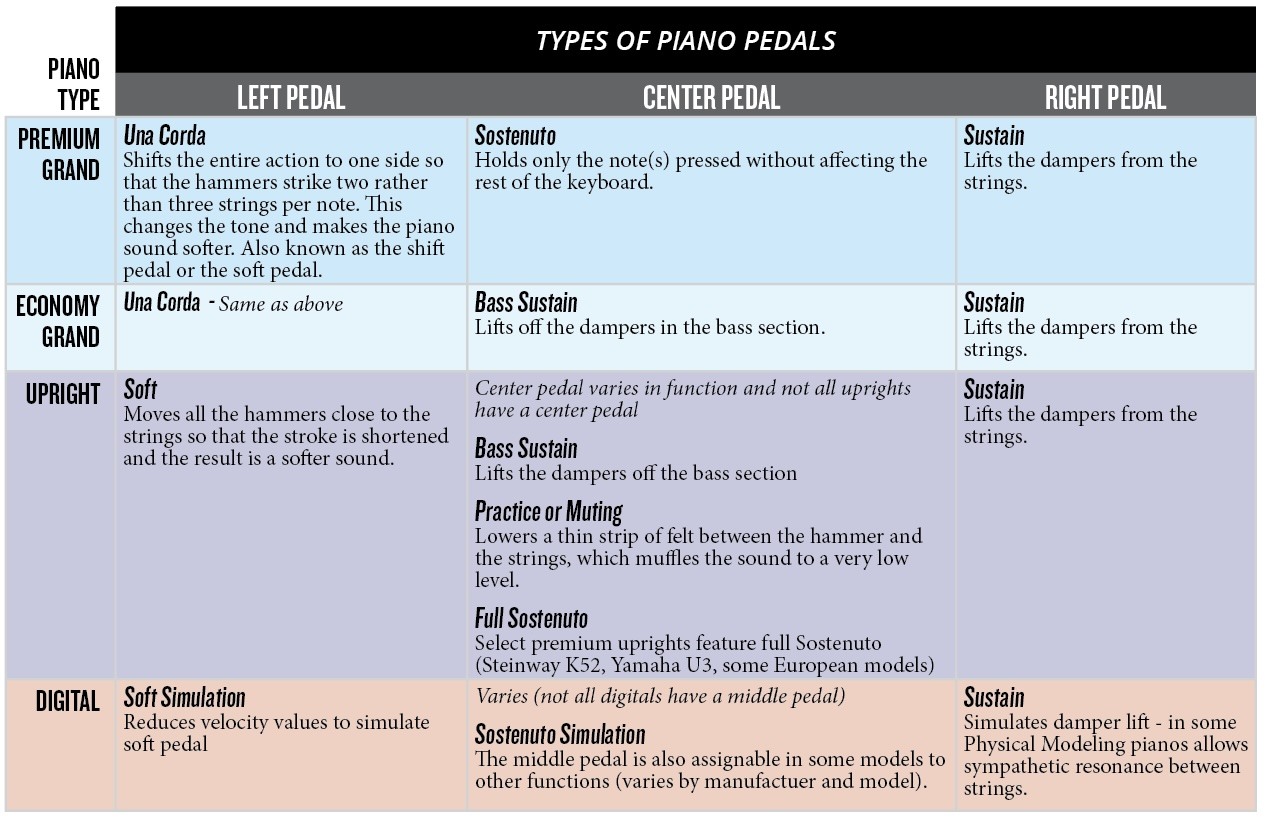The Pedals on a Piano
Piano pedals are foot-operated levers that change the sound and response of the piano. Here's a breakdown of the three most common pedals:
-
Damper Pedal (or Sustain Pedal): This is the pedal on the far right when there is more than one pedal present. When you press down on the damper pedal, it lifts the dampers off the strings. Dampers are felt pads that normally rest on the strings after you release a key. With the damper pedal engaged, the strings continue to vibrate even after you lift your fingers from the keys, creating a sustained and richer sound. It also allows for harmonic interplay between strings. This is often used for creating long, flowing passages or adding emphasis to specific chords.
-
Soft Pedal (or Una Corda Pedal): This is the pedal on the far left. Depending on the piano, pressing this pedal does one of two things:
- Grand Pianos: In grand pianos, the soft pedal shifts the hammers slightly so they strike fewer strings per note. This results in a distinctly different and softer sound.
- Upright Pianos: In upright pianos, the soft pedal moves the entire action mechanism (including the hammers) closer to the strings. This again creates a softer but does not change the tone, just the volume.
-
Sostenuto Pedal (Middle Pedal - not on all pianos): This pedal is found in the middle on some grand pianos, but not on uprights. It's the least commonly used pedal. When you press down on the sostenuto pedal and then play a note, it only holds down the notes that were sounding at the time you pressed the pedal. Any notes you play afterwards will not be sustained, only the ones "locked in" with the pedal. This allows you to create interesting effects where some notes are sustained while others are short and staccato.
This chart from our updated Piano Buyers Guide provides a summary of pedal functionality:
